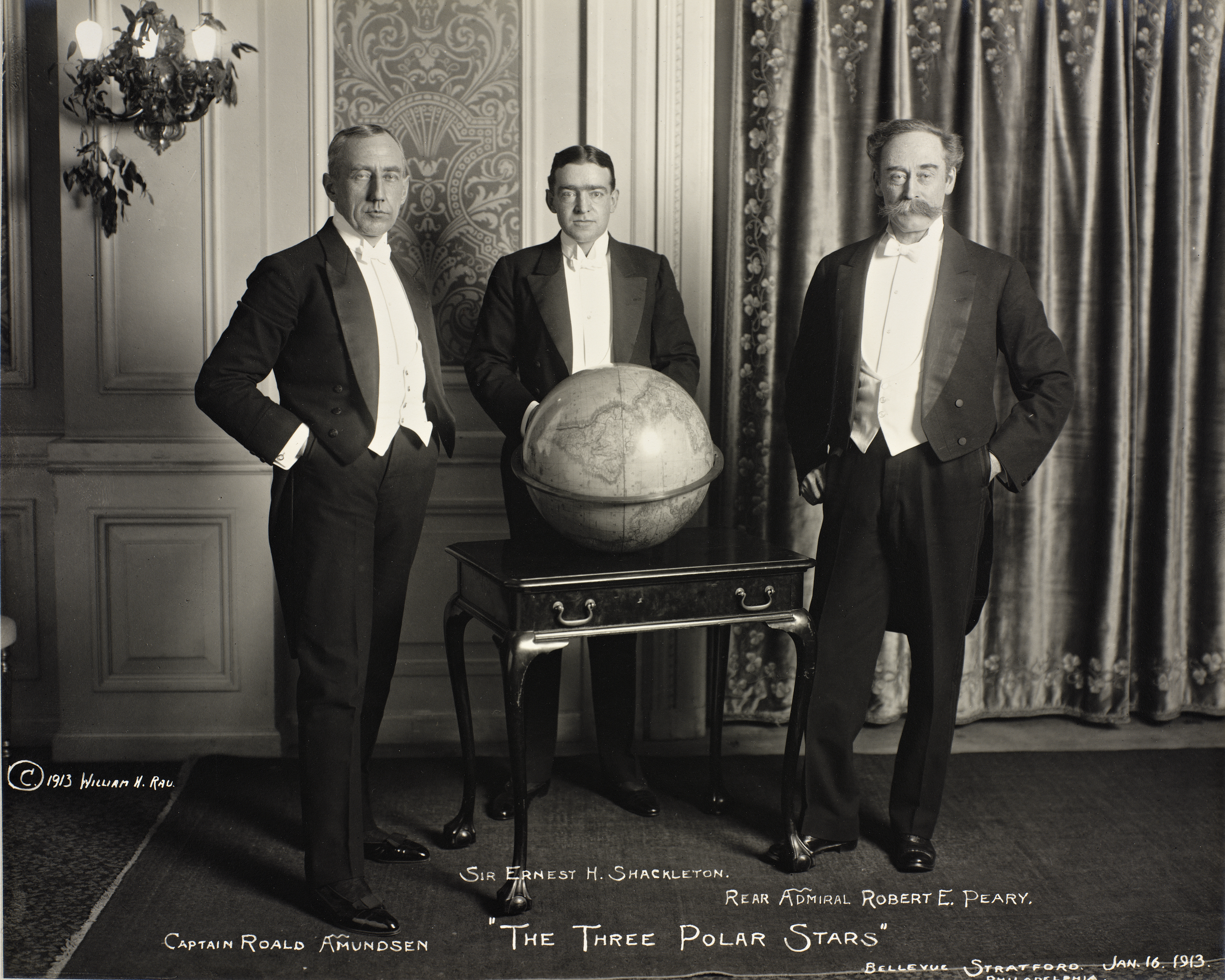Ernest Shackleton: How One Man’s Determination Defied the Antarctic Wilderness
In 1914, the world was a place of great adventure and exploration. One of the most incredible stories from that time is about Ernest Shackleton and his brave crew. Their journey to the South Pole turned into an extraordinary tale of survival against all odds. Let me take you through this gripping story step by step.
Ernest Shackleton was born on February 15, 1874, in Kilkea, County Kildare, Ireland. He was an experienced explorer, having previously participated in several Antarctic expeditions. By 1914, he was determined to achieve something monumental: the first land crossing of Antarctica. He named this ambitious venture the Imperial Trans-Antarctic Expedition.
Shackleton gathered a crew of 28 men and set sail on his ship, the Endurance, from London in August 1914. The expedition was not just a scientific mission; it was also a race against time, as the shadow of World War I loomed over Europe. Shackleton's goal was to cross the continent from the Weddell Sea to McMurdo Sound, a journey of about 1,800 miles (2,900 kilometers).
On December 5, 1914, the Endurance departed from South Georgia, the last land they would see for over a year. As they entered the Antarctic pack ice, the ship encountered heavy ice conditions, which began to trap it. Shackleton and his crew hoped to navigate through the ice, but the conditions worsened. By January 18, 1915, the Endurance was completely beset by ice, and they were unable to move.
The crew settled into a routine, trying to maintain morale while waiting for the ice to break. They kept busy by hunting seals and penguins for food and maintaining the ship. However, the ice continued to press against the Endurance, and by October 27, 1915, Shackleton made the difficult decision to abandon the ship. The Endurance had been crushed by the relentless pressure of the ice, and they were left stranded on the ice floes of the Weddell Sea.
With the ship lost, Shackleton's primary focus shifted to survival. The crew set up camp on the floating ice, which they named Ocean Camp. They had limited supplies and faced the harsh realities of the Antarctic winter. Temperatures plummeted, and the sun disappeared for months, plunging them into darkness. Shackleton knew that their chances of survival depended on his leadership and the crew's ability to work together.
Shackleton organized the men into teams to hunt for food, maintain their camp, and keep spirits high. The crew faced numerous challenges, including extreme cold, decreasing supplies, and the constant threat of starvation. Shackleton's leadership style was crucial during this time. He encouraged camaraderie and ensured that everyone had a role to play, which helped to maintain morale.
As the ice began to break apart in late 1915, Shackleton realized that they needed to escape the ice floes. On April 9, 1916, they launched three lifeboats and began an uncertain journey across the ice. The men faced perilous conditions, battling freezing temperatures, fierce winds, and treacherous ice. They travelled for several days, averaging only a mile and a half per day.
After a gruelling journey, they finally reached Elephant Island on April 15, 1916. This remote island was their first taste of solid ground in over four months. However, they were still far from safety. Shackleton knew that they needed to get help, but the nearest civilization was over 800 miles away on South Georgia Island.
Shackleton made the courageous decision to take a small group of men with him to seek help. He chose five of his most trusted crew members: Frank Worsley, Tom Crean, James Caird, John Vincent Moon, and Harry McNish. They set sail on the James Caird, a lifeboat measuring just 22 feet (6.7 meters) long, on April 24, 1916.
The journey across the treacherous South Atlantic was fraught with danger. The crew faced towering waves, freezing temperatures, and relentless storms. Worsley, the navigator, used his skills to guide the boat, often relying on the stars for navigation during the cloudy days. After 16 difficult days at sea, they finally spotted South Georgia Island on May 8, 1916.
Upon landing on the southern side of South Georgia, Shackleton and his crew faced another challenge: crossing the island to reach the whaling station on the other side. The terrain was rugged, with steep mountains and glaciers. Shackleton, Worsley, and Crean set off on foot, leaving the other two crew members behind to wait for their return.
The crossing was difficult, but Shackleton's determination and leadership shone through. They faced exhaustion, hunger, and the harsh elements, but they persevered. After three days of gruelling effort, they reached the whaling station at Stromness on May 20, 1916. Shackleton's had a big relief; they had made it to safety.
Shackleton wasted no time in organizing the rescue of the men left behind on Elephant Island. He secured a ship, the Yelcho, from the Chilean government and set out to rescue his crew. After several failed attempts due to pack ice blocking their path, Shackleton finally reached Elephant Island on August 30, 1916.
When Shackleton arrived, he surprisingly found all 22 men alive and waiting for him. They had survived for over four months on the island, living off seal meat and penguins. The reunion was emotional, and Shackleton's leadership had ensured that not a single member of his crew had perished during the ordeal.
Shackleton and his crew returned to England in September 1916, but their story did not receive the attention it deserved at the time. The world was engulfed in World War I, and the public's interest in polar exploration had faded. However, Shackleton's leadership and the incredible survival of his crew became a legendary tale of human endurance.
Shackleton's expedition is often cited as one of the greatest survival stories in history. His ability to adapt to changing circumstances, maintain morale, and lead his men through adversity has inspired countless individuals.
Ernest Shackleton's survival story provides several important lessons for anyone dealing with life's challenges. First and foremost, adaptability is key. Shackleton’s ability to shift his focus from crossing Antarctica to ensuring the survival of his crew was crucial. His flexibility in the face of adversity demonstrated how adjusting goals can lead to better outcomes. Additionally, leadership matters significantly. Shackleton's leadership style played a central role in keeping his crew motivated and focused on survival. A strong leader, like Shackleton, can inspire others to persevere through the toughest times.
Teamwork is also essential; Shackleton fostered a sense of camaraderie among his crew, ensuring that everyone had a role to play. Working together towards a common goal can help overcome significant challenges. Maintaining hope was another critical element of Shackleton’s approach. Throughout their ordeal, he instilled hope in his crew, showing how a positive outlook can make a significant difference in challenging situations. Finally, preparation for the unexpected was vital. Shackleton’s expedition encountered numerous unforeseen challenges, highlighting the importance of being prepared for the unexpected and having contingency plans to navigate difficult circumstances.
Ernest Shackleton's survival story from the ambitious goal of crossing Antarctica to the incredible feat of rescuing his crew is a powerful reminder of the strength of the human spirit. Shackleton's legacy continues to inspire generations, reminding us that even in the face of adversity, hope, teamwork, and strong leadership can lead to survival and success.
If you found Shackleton's incredible survival story inspiring, please give this article a thumbs up! Share it with friends and family who might appreciate a tale of courage and resilience. We’d love to hear your thoughts, so feel free to leave a comment below!












